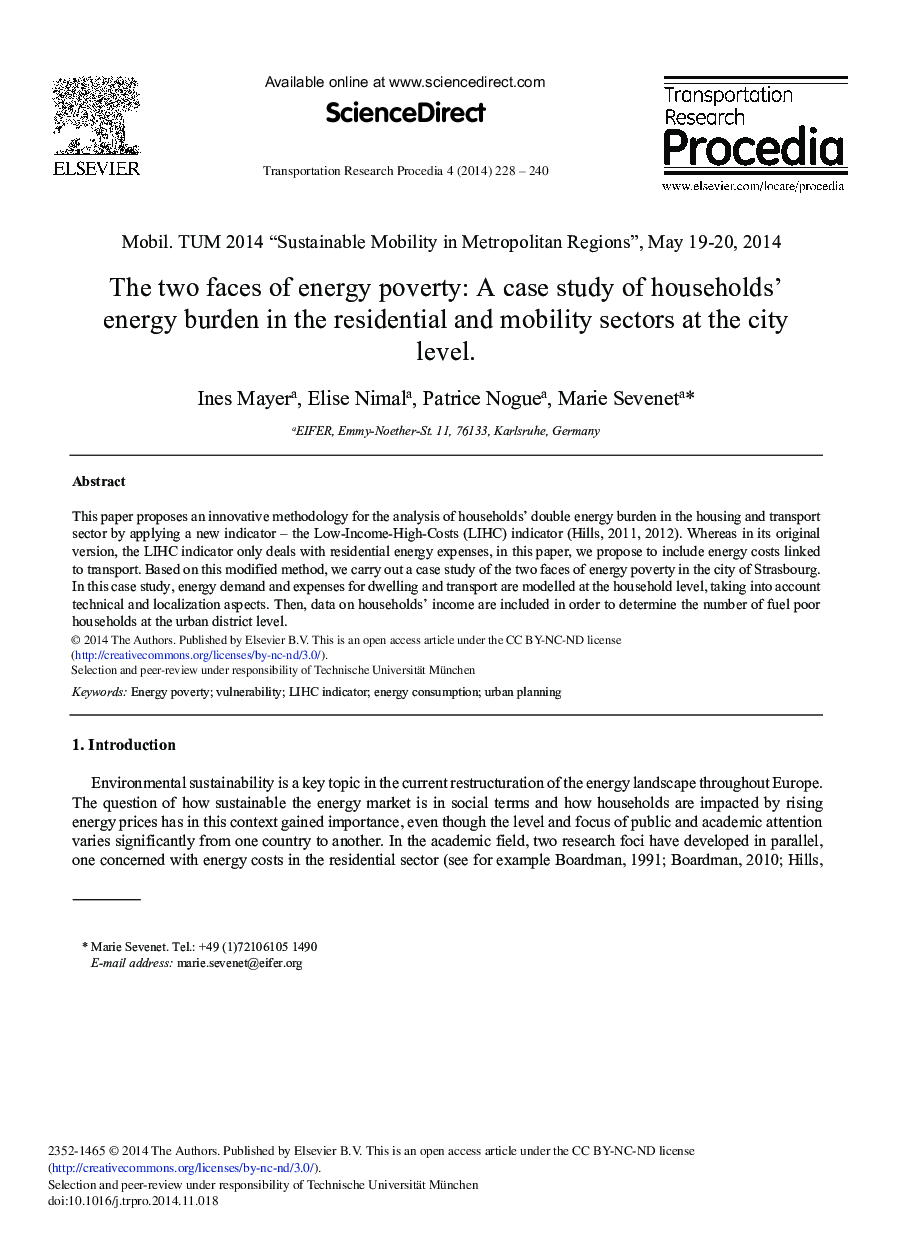| Article ID | Journal | Published Year | Pages | File Type |
|---|---|---|---|---|
| 1106327 | Transportation Research Procedia | 2014 | 13 Pages |
This paper proposes an innovative methodology for the analysis of households’ double energy burden in the housing and transport sector by applying a new indicator – the Low-Income-High-Costs (LIHC) indicator (Hills, 2011, 2012). Whereas in its original version, the LIHC indicator only deals with residential energy expenses, in this paper, we propose to include energy costs linked to transport. Based on this modified method, we carry out a case study of the two faces of energy poverty in the city of Strasbourg. In this case study, energy demand and expenses for dwelling and transport are modelled at the household level, taking into account technical and localization aspects. Then, data on households’ income are included in order to determine the number of fuel poor households at the urban district level.
